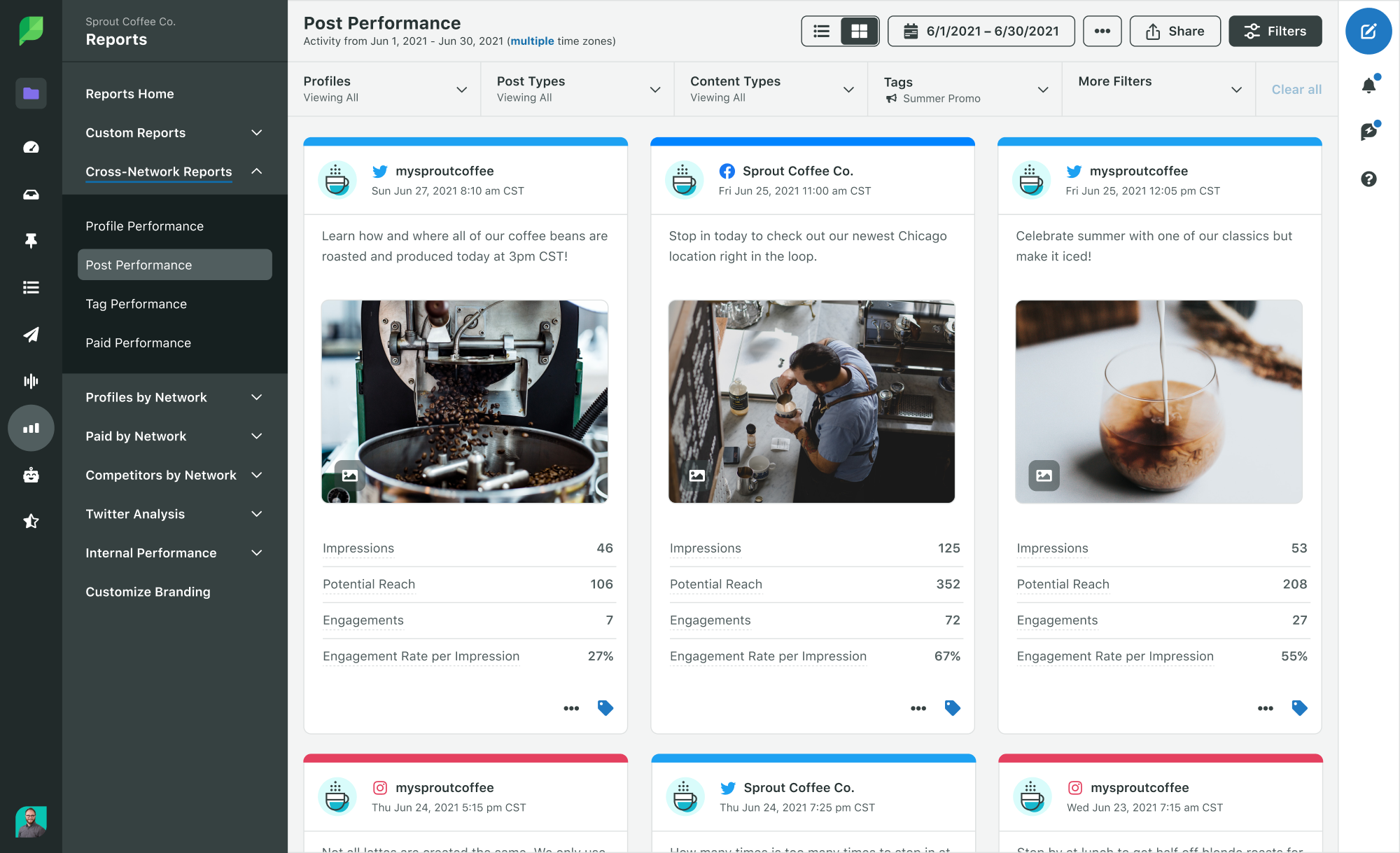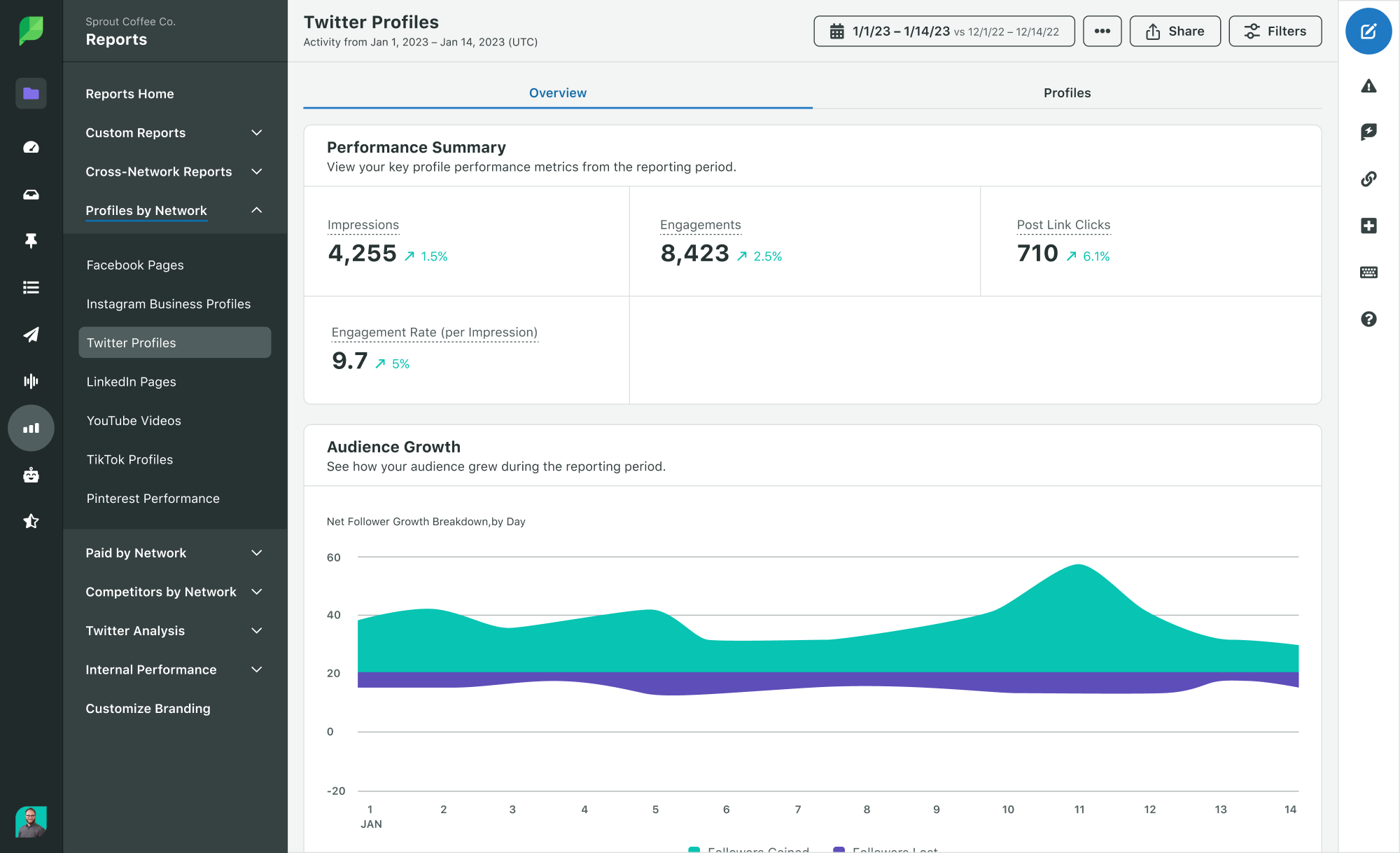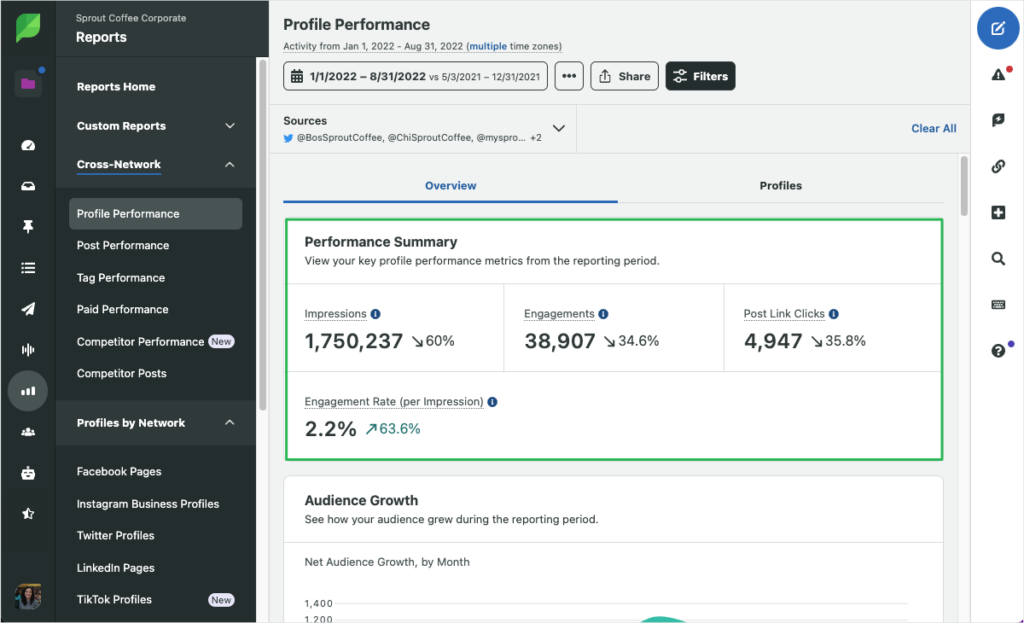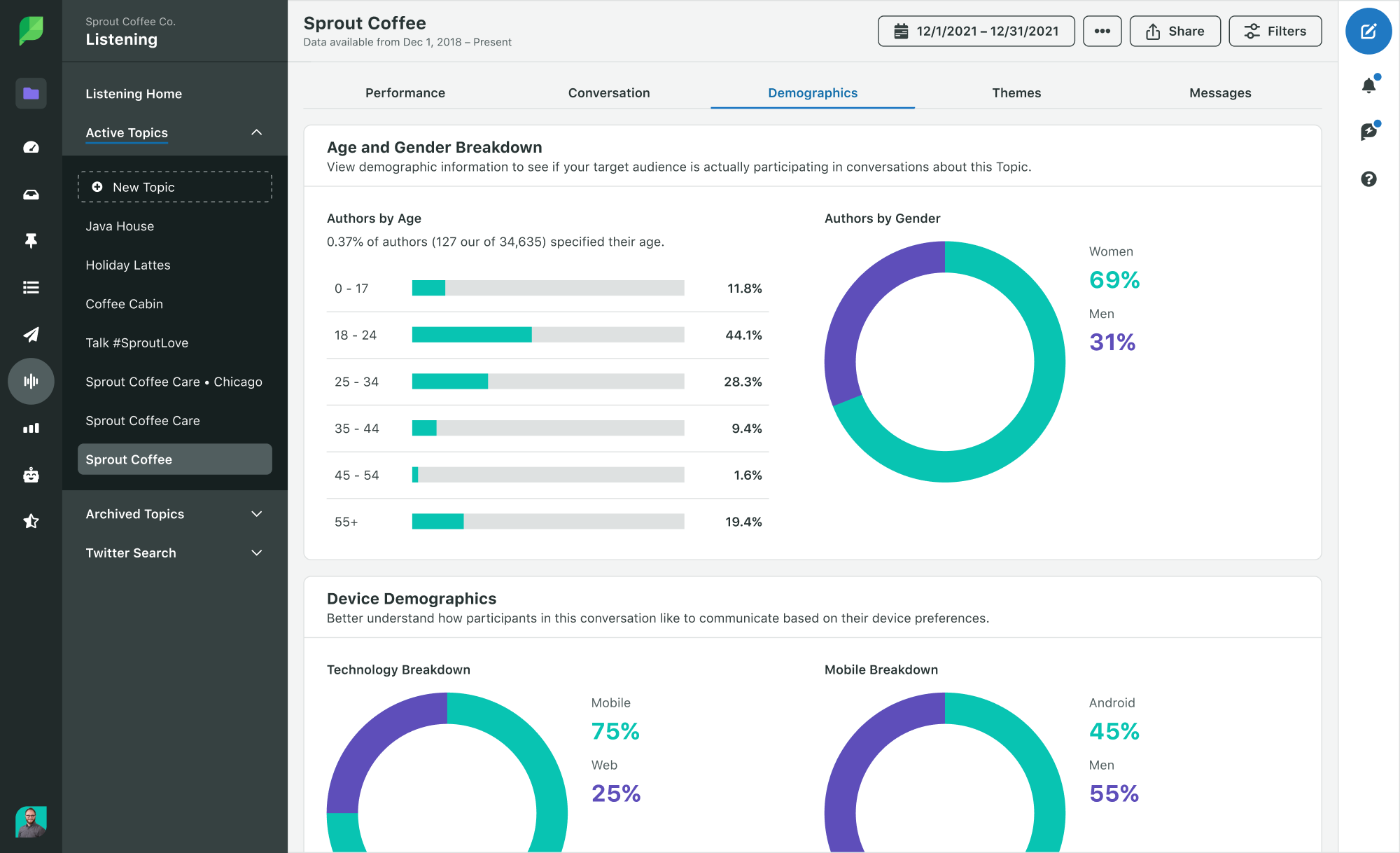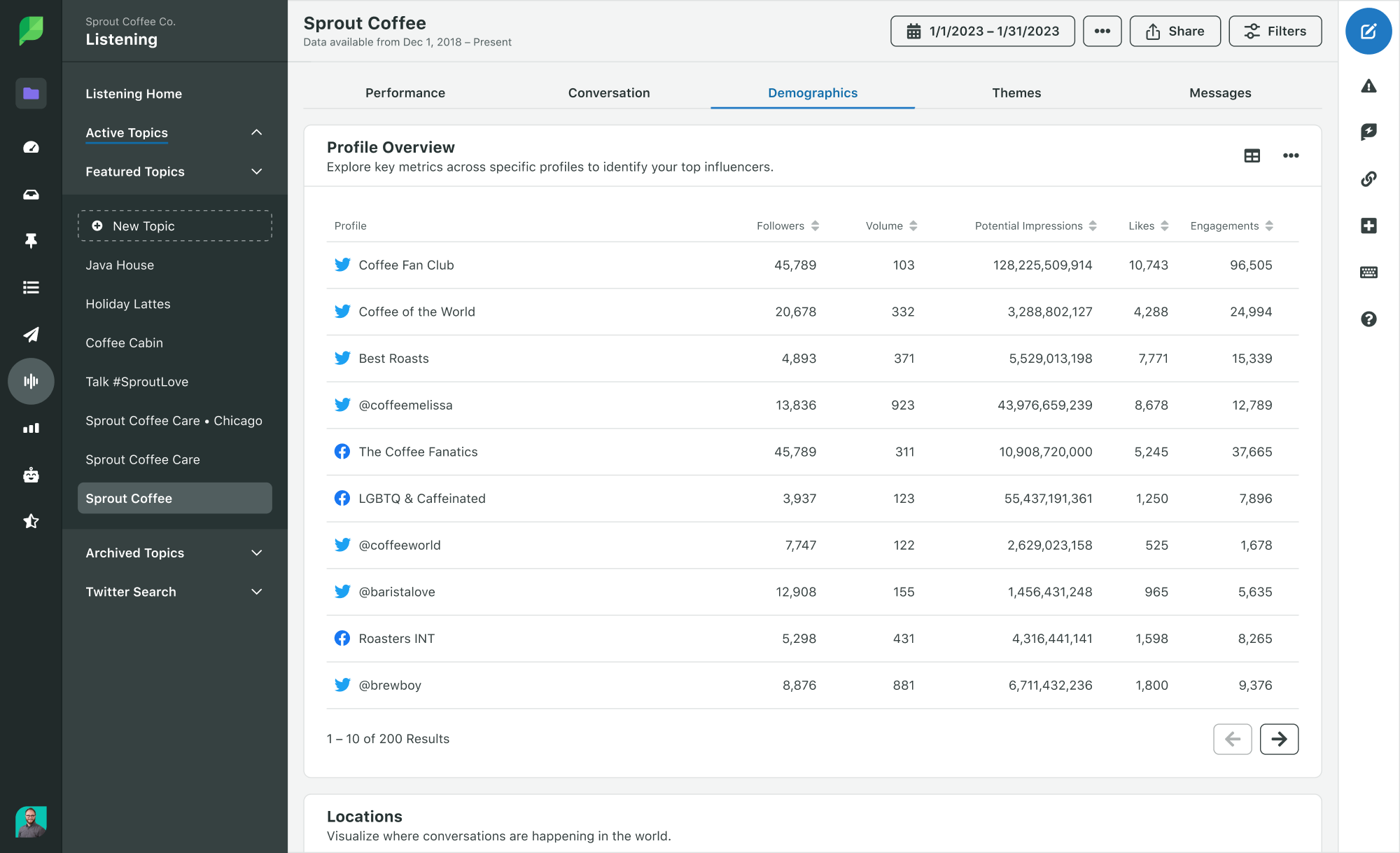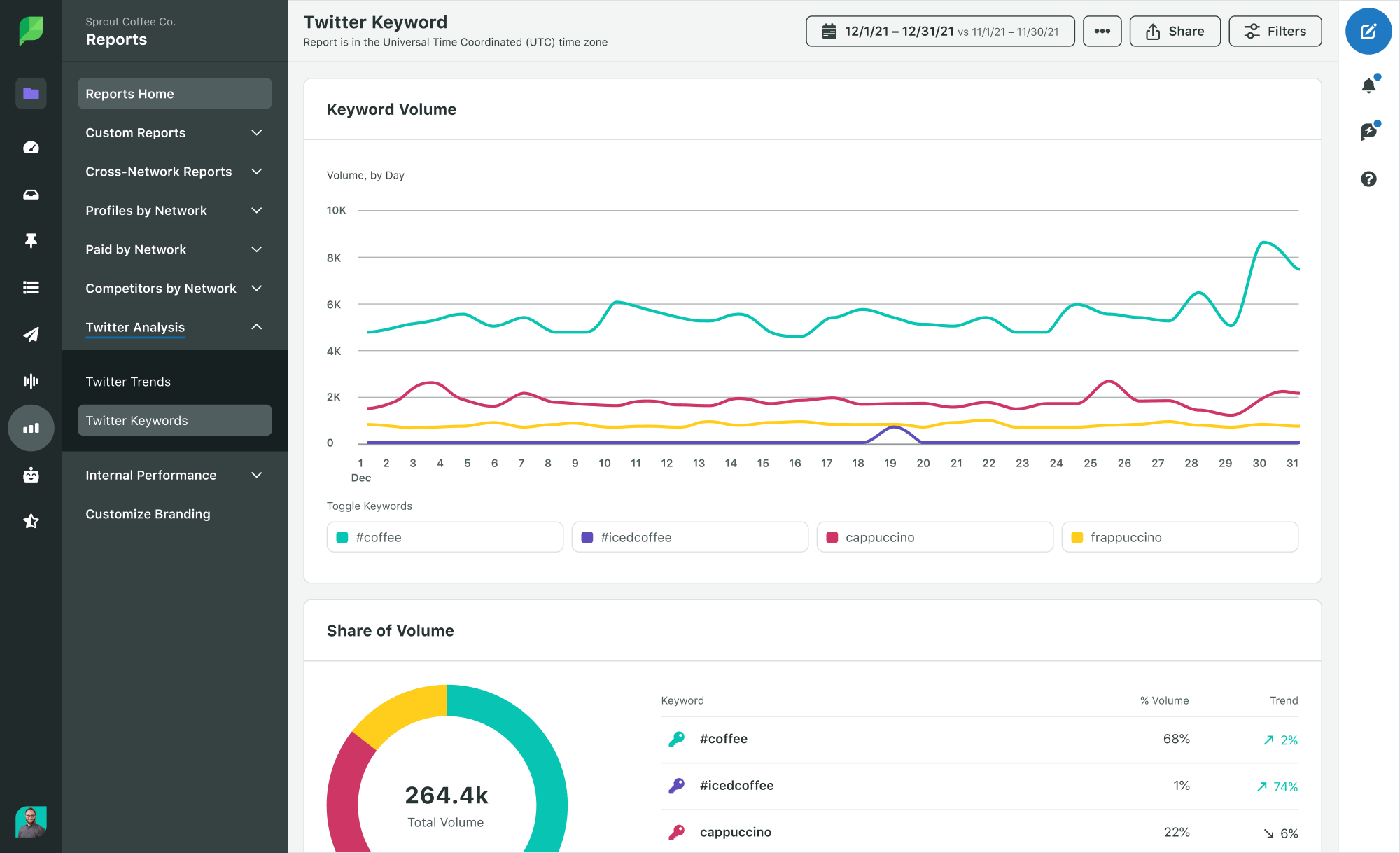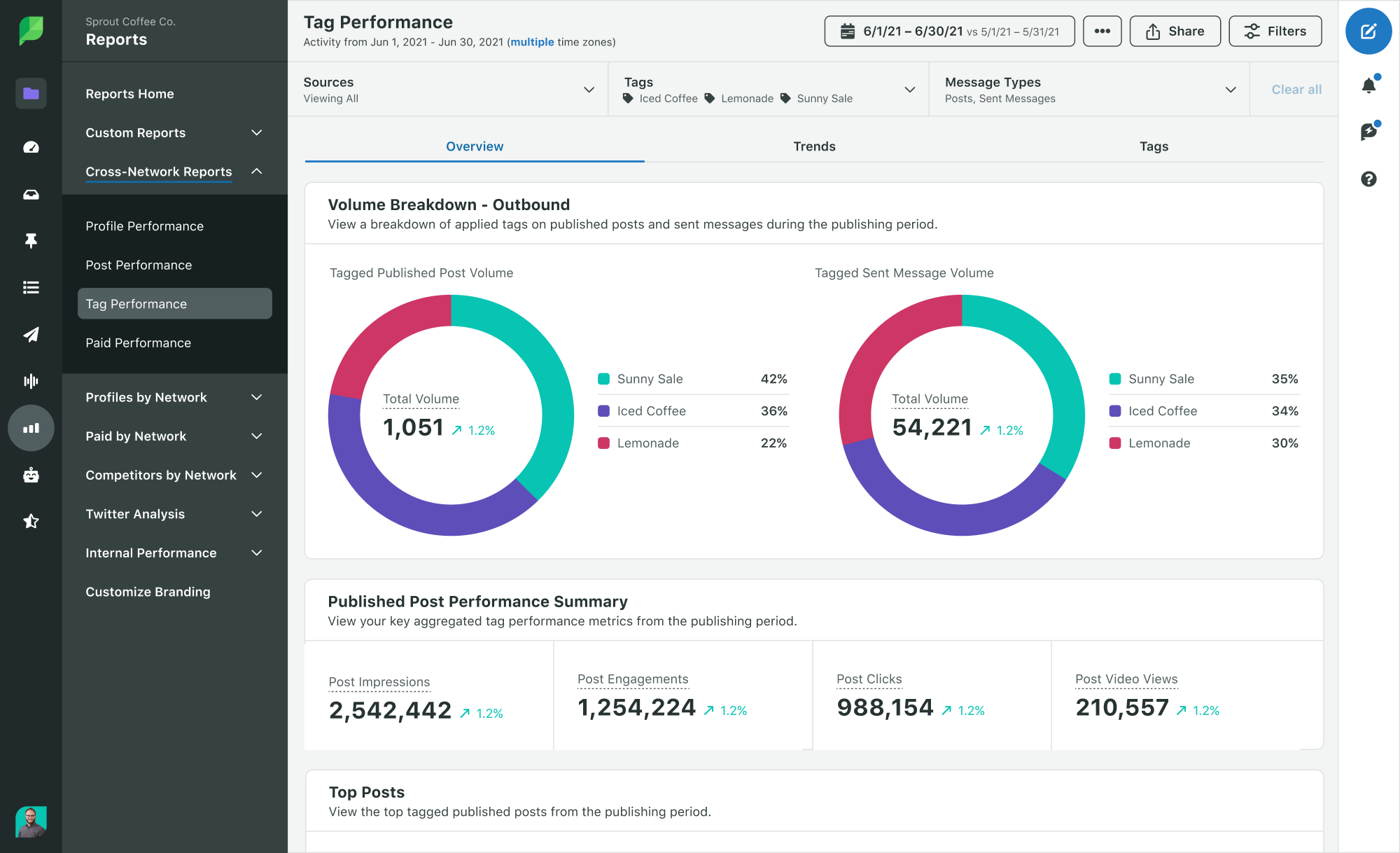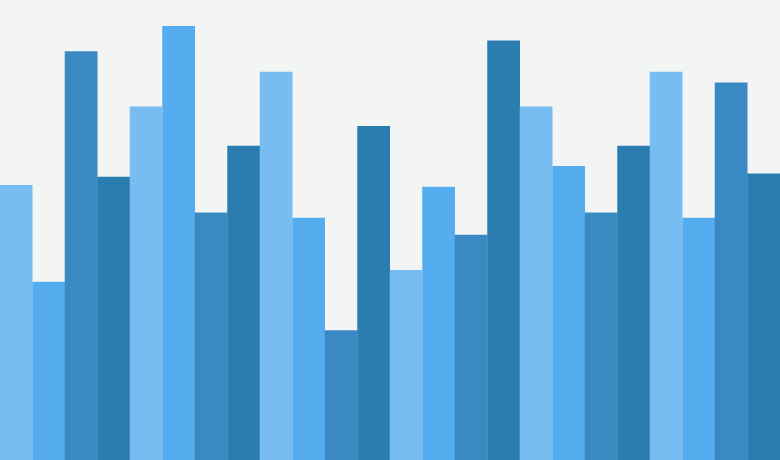
Twitter Analytics
Twitter analytics: How to analyze and improve your Twitter data
Reading time 11 minutes
Published on July 18, 2023

Table of Contents
A Twitter (rebranded as "X") marketing strategy gives you the opportunity to reach millions of people and build an engaged community. But how do you know if your strategy is paying off? That’s where your Twitter analytics come in, providing you with essential data to assess your performance. This helps you figure out whether your strategy is working and what improvements you need to make.
In other words, Twitter analytics will help you make informed decisions to maximize outcome. That’s the same reason why social media analytics play such a vital role in your overall social media marketing efforts.
Fortunately, the platform offers an in-app analytics dashboard to track important performance metrics. In this guide, we break down the steps to use this dashboard and make the most of your Twitter insights. Let’s dive in.
What are Twitter analytics?
Twitter analytics are a set of data points on how your Tweets are performing and how your audience is responding. Your Twitter analytics dashboard shows you your profile growth in terms of visits, follows and mentions. It lets you keep track of Tweet analytics such as engagements, impressions, link clicks, replies and Retweets.

This data is critical for understanding who’s interacting with your Tweets and how your account is performing overall. Even if you log in daily and generally understand how the account is performing, it’s essential to put numbers to those feelings. You can then use these Twitter insights to refine your strategy.
How to access Twitter analytics
Every Twitter profile comes with free access to the native Twitter analytics dashboard. You can access the dashboard directly from https://analytics.twitter.com. Or follow the steps below to see your Twitter analytics.
How to view Twitter analytics from desktop
Step 1. From your Twitter homepage, click on the “More” button on the left-hand panel. This will open a list of options to access Creator Studio, Professional Tools and Settings and Support. Click on “Creator Studio” and then select “Analytics.”

Step 2. Selecting “Analytics” will instantly bring you to your native Twitter analytics dashboard. Here, you can get an overview of how your profile and Tweets have been performing. The 28-day summary section gives you an overview of your performance. This will show you metrics related to Tweet impressions, profile visits, mentions and followers.
Step 3. Scroll down and you’ll see the monthly breakdown of your performance. For each month, you can see your top Tweet, top mention, top follower and top media Tweet. You also get a summary of the number of Tweets, Tweet impressions, profile visits, mentions and new followers.

Step 4. Click on the “View all Tweet activity” button under your “Top Tweet” section. This will open more advanced analytics on how your Tweets have performed.
You’ll see a graph comparing how your Tweet impressions changed over the chosen period. You can also manually set the period you want to analyze.

How to view Twitter analytics from mobile
Twitter users have the option to view Twitter analytics from mobile devices. But keep in mind that you won’t get access to the full analytics dashboard on mobile that you would on desktop. You can only view analytics for individual Tweets.
To view your Tweet analytics on mobile, open the Tweet you want to analyze. Then tap on the “View Tweet analytics” button at the bottom. This will give you a comprehensive look at different performance metrics for the selected Tweet, such as impressions, engagements, detail expands and profile visits. It even shows you the number of new followers you gained as a result of that Tweet.

Who are Twitter analytics for?
Anyone with an interest in how their Twitter account is performing should use Twitter analytics. To view your analytics data, make sure you turn on analytics for your account via https://analytics.twitter.com.
Analytics are most useful to those with a vested interest in Tweet performance and engagement rates. This means social practitioners, managers and agencies who have goals based on certain key performance indicators (KPIs).
Twitter analytics can help them to determine the type of posts that are most interesting to their followers. These insights are crucial for optimizing their Twitter marketing strategies to maximize results.
Twitter analytics for practitioners
Social practitioners use Twitter to increase brand awareness and follower count. The platform helps them to grow and engage the brand’s communities.
Their goals include expanding to new audiences and creating demand for products and services. As such, they’re interested in driving traffic or content consumption. These practitioners need Twitter analytics to measure post performance, engagement and follower growth. Having a robust analytics tool will give them the opportunity to spend more time creating engaging content.
If you’re a practitioner, a Twitter analysis will help you understand how your Twitter posts are performing. You can drill down to the singular Tweet level to see each Tweet’s metrics.
You can also see your top Tweets to find out which ones resonate well with your audience. These insights will help you inform and optimize your strategy.

Twitter analytics for managers
Managers want to drive adoption and retention of products and services. As such, they use Twitter as a channel to bring in leads and push them through the sales funnel.
Their goals include increasing conversion rates, repeat purchases and cross-sell opportunities. At the same time, they want to use the platform for growing brand awareness and engagement. So it’s important for them to measure customer churn and retention along with campaign performance.
Managers will find Twitter analytics helpful because it measures the social ROI of paid and organic efforts. You get a comprehensive view of areas where you need to improve and understand how well your team is performing.
Twitter analytics for agencies
The goals and needs of agencies are a mix between those of managers and practitioners. They’re the ones creating, publishing and reporting for businesses. And they need to be able to collaborate with internal team members. Agencies have to measure similar metrics to practitioners while focusing on the goals of managers.
The Twitter activity data allows them to measure important performance metrics for the brands they work with. They can easily export the data from their Twitter analytics dashboard and share it with clients.
Twitter gives you the option to export data by Tweet or by day. So, you can build reports specific to business needs and help clients visualize the impact of your work.

What metrics can you track with Twitter analytics?
Let’s be honest, social media has its own language.
It’s easy to get overwhelmed by mentions, hashtags, impressions, interactions and everything in between.
The bottom line is you can’t measure something you don’t understand. So here are some of the most important metrics that you’ll find within the native Twitter analytics dashboard. We’ve also included other metrics to track using third-party Twitter analytics tools.
Impressions
The total number of times any user could have potentially seen a brand’s name or message.
Reach
The number of users who saw an impression of your post in their timeline.
Engagement
A Twitter user’s interaction with another user. This can come in the form of mentions, Retweets, favorites and new followers.
Engagement rate
Engagement rates are metrics that track how actively involved with your content your audience is. Engaged consumers interact with brands through likes, comments and social sharing.
The engagement rate is a useful metric for analyzing the efficacy of brand campaigns. People who spend time interacting with videos, updates and blogs are more likely to convert into paying customers. Engagement rates also have a subset of measurements like “sharing metrics.” This highlights the impact of your word-of-mouth marketing.
Link clicks
The total number of times people clicked on a link in a Tweet.
Mentions
The total number of instances where a Twitter user that is talking to you, or about you, mentions you in their Tweet.
Followers
The number of Twitter users that subscribe to your updates at any given time.
Response rate
Percent of inbound messages you respond to that warrant a response.
Response time
The amount of time it takes your business to respond to inbound messages.
Profile visits
The number of users who visited your profile within a given timeframe.
Top Tweet
The Tweet that earned the most impressions during a given month.
Top mention
The mention that earned the greatest number of engagements during a given month.
Top follower
Your most popular new follower based on the number of followers they have.
Top media Tweet
Your media Tweet—one that has an image, video or gif—that earned the most impressions during a given month.
Retweets without comments
The number of people who Retweeted you without adding a comment.
Likes
The number of likes that your Tweets received during a specified timeframe. It's the small heart icon below every Tweet.
Replies
The number of replies that your Tweets received during a specified timeframe.
Use Twitter analytics confidently
Monitoring your social media analytics regularly enables you to find out what works and what doesn’t. This ultimately means you can make smarter business decisions. In a small business setting, being able to quickly pivot is always a plus.
Once you’ve aligned goals and determined which metrics are key for your business, it’s time to start tracking. Don’t let the numbers or the sea of data scare you. With proper preparation, the right tools and a few best practices, you’ll get the biggest bang for your buck when it comes to tackling Twitter.
Sign up for a personalized demo of Sprout Social to see how it aligns with your Twitter strategy.
Use of Twitter nomenclature across Sprout refers to newly rebranded X platform and related terminology.
Twitter Analytics FAQs
How do I check my Twitter analytics?
You can check your Twitter analytics directly from https://analytics.twitter.com. From your Twitter homepage, you can also go to More > Creator Studio > Analytics
What does Twitter analytics measure?
Twitter analytics measures your post and profile performance over time. It lets you track metrics such as impressions, engagements, profile visits, mentions and follower growth.
Why can’t I see my Tweet analytics?
To see your Tweet analytics, you need to be logged in and have analytics turned on. If you still can’t see your Tweet analytics after this, it’s likely because of the following reasons:
- You’re not primarily Tweeting in one of the supported languages.
- Your account is younger than 14 days.
- You’ve violated Twitter policy.
- Your account is deleted, restricted or suspended.
Additional resources for Twitter Analytics
Twitter analytics: How to analyze and improve your Twitter data
9 Twitter analytics tools to amplify your strategy
Twitter metrics: How & why you should track them
How to create Twitter reports with Sprout Social
How to analyze Twitter followers effectively
What to know about how the Twitter algorithm works
What are Twitter impressions & why are they so important to Twitter?
Twitter mentions: How to find, track & get more
How to View & Measure Your Tweet Activity

